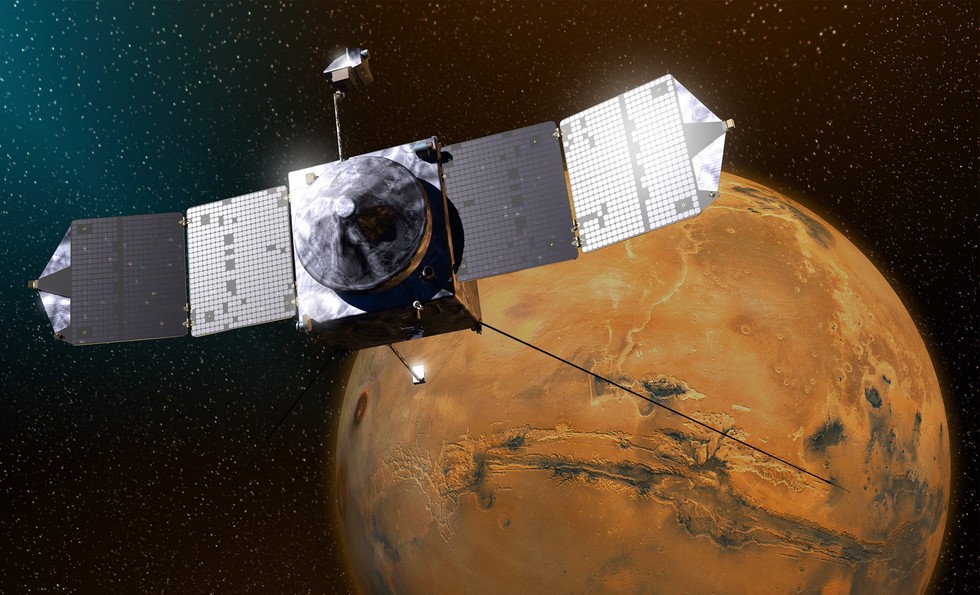Happy Anniversary, MAVEN! NASA Mars Probe Marks 2 Years of Science Work

NASA's newest Mars orbiter has now been on the job for two Earth years, investigating how the Red Planet lost its atmosphere in the ancient past.
The Mars Atmosphere and Volatile Evolution (MAVEN) spacecraft reached Mars on Sept. 21, 2014, and officially began its science mission less than two months later, on Nov. 16 of that year.
MAVEN — the first orbiter tasked with studying Mars' atmosphere as its primary task — has made a number of interesting discoveries over the past two years. In 2015, for example, MAVEN's measurements allowed mission scientists to determine just how quickly Mars' atmospheric gases escape to space today — at an average rate of about 4 ounces (100 grams) per second. [NASA's MAVEN Mars Mission in Photos]
"Taken together, the MAVEN results tell us that loss of gas from the atmosphere to space has been the major force behind the [Martian] climate having changed from a warm, wet environment to the cold, dry one that we see today," MAVEN principal investigator Bruce Jakosky, of the University of Colorado Boulder, said in a NASA statement.
MAVEN's data suggest that Mars had lost most of its atmosphere by about 3.7 billion years ago, mission scientists have said. For perspective, researchers think that life first appeared on Earth around 4 billion years ago.
The orbiter also spotted a cloud around Mars that likely consists of interplanetary dust. In addition, in a layer of the atmosphere known as the ionosphere — the zone where auroras occur — MAVEN found a layer of metal ions, or charged particles. These are produced when interplanetary dust falls into the atmosphere.
Some side observations have also yielded interesting results. For example, Mars has no global magnetic field, yet MAVEN found ultraviolet auroras spreading over the planet's northern hemisphere. The spacecraft also detected a stream of ions flying into space that had never been spotted before.
Get the Space.com Newsletter
Breaking space news, the latest updates on rocket launches, skywatching events and more!
Though MAVEN's science mission officially began on Nov. 16, 2014, the orbiter started doing some science work in October of that year. One of MAVEN's earliest tasks was to observe Comet Siding Spring make a close flyby of Mars on Oct. 19, 2014, to see what effects the comet had on Mars' atmosphere.
NASA recently announced that MAVEN has achieved all of its science objectives, and that MAVEN has been granted a two-year mission extension that will keep it operating through at least September 2018.
Follow Elizabeth Howell @howellspace, or Space.com @Spacedotcom. We're also on Facebook and Google+. Original article on Space.com.
Join our Space Forums to keep talking space on the latest missions, night sky and more! And if you have a news tip, correction or comment, let us know at: community@space.com.

Elizabeth Howell (she/her), Ph.D., was a staff writer in the spaceflight channel between 2022 and 2024 specializing in Canadian space news. She was contributing writer for Space.com for 10 years from 2012 to 2024. Elizabeth's reporting includes multiple exclusives with the White House, leading world coverage about a lost-and-found space tomato on the International Space Station, witnessing five human spaceflight launches on two continents, flying parabolic, working inside a spacesuit, and participating in a simulated Mars mission. Her latest book, "Why Am I Taller?" (ECW Press, 2022) is co-written with astronaut Dave Williams.









